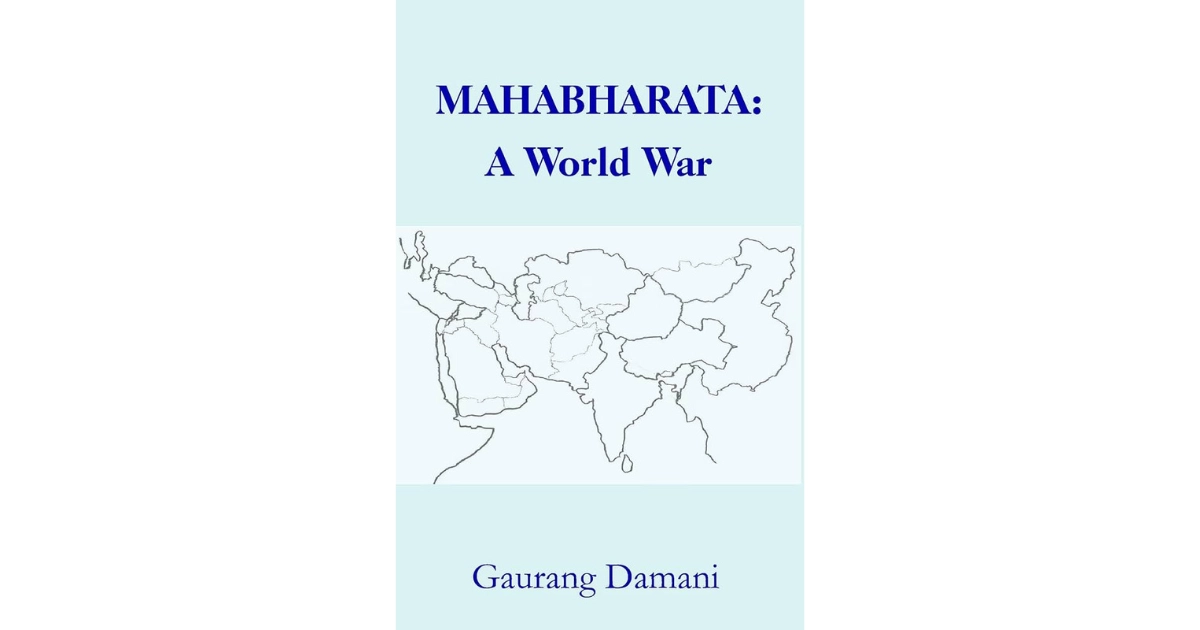
share this article
The latest work by author Gaurang Damani, “Mahābhārata: A World War”, is a highly readable book which outlines the grand epic succinctly, emphasizing the geographical territory recorded in it. The utility of doing so is twofold: First, it provides an itinerary of the places mentioned in the Mahābhārata, many of which have great historical and spiritual significance. Secondly, it points to a wider involvement of powers in the conflict than is generally considered. While the title of the book is slightly sensational, the evidence listed by the author does warrant a bold claim.
To understand the claim of Mahābhārata being a world war, we must first contextualize for ourselves the concept of a world war. The twin European wars which fit the bill originally began as intra-europe skirmishes. Europe being the hub of the colonizing forces then, the colonized countries too had to join the effort; either in the form of men, or resources, or both. In essence, the then known world had to get embroiled in a conflict which began as a sub-continental issue.
During the Mahābhārata era, Bhārata served as a hub in many ways. Kāśī was a nodal point of the Uttarapatha (northern highway), which extended from Romāṇa (Italy) to Cīna (China). Though that cannot be claimed as encompassing the entire world, yet that did constitute much of the known advanced states of those times. While they were no colonial overlords (Rājasūya yajña of Yuddhiṣṭhira is not colonization), the kings of Bhāratavarṣa had extensive relations with the kings of various regions outside the current geographical boundaries of the country. It was inevitable for them to be involved in the conflict. Thus, what began as a domestic quarrel, raked much of the known world into it in this case as well.
Looked at from another angle, the Mahābhārata involved multiple civilizations, from those of Āryas to that of Mlecchas. The author lists out various clans and tribes of allies amassed by both sides in the battle, which involved a wide range of people from a wide range of cultures and territories.
Many of the claims of the author in the book require further research, such as the correlation between the story of Narakāsura and Enki of the old Sumeria. Whereas Narakāsura establishes Prāgjyotiṣa (mentioned in Mahābhārata and Rāmāyaṇa as much further west of Sindha, and not the Prāgjyotiṣa of the East) on the banks of river Lauhitya (derived from red metal/copper), Enki establishes city of Eridu on the banks of Euphrates (derived from Ufratu, copper). Narakāsura is opposed to Indra, whereas Enki is opposed to Enli, Sumerian God of weather and thunder.
The importance of pursuing these claims is not just as an instrument to satisfy our curiosity, but to also move away from the Western dominant narrative of the world. It serves not just to better understand our history, but also to revive the historical connections which our country maintained with the rest of the world, millenia past.
The book is a faithful reproduction of the epic. Though oversimplified at certain places, it is written keeping in mind the lay reader, who can quickly refer to an outline of the itihāsa whenever required. Also, the author has taken the conscious decision of laying out the story in present tense, so that the reader relives the epic while reading the book.
An important caveat to underscore to the eager reader however, is that the original text of Mahābhārata should not be pursued as a plainly historical text with strippable fantastic elements. This would be defeating the purpose of the itihāsa, which is a mokṣa śāstra. The reader must gauge that while the historical core with geography and other elements are researchable and indexable, the goal is not to replace itihāsa with historiography.
As S.N. Balagangadhara notes in his seminal paper, “What do Indians need, a history or a past”,
“To think that narratives about the human past can teach us how to live or how to be happy or how to flourish as human beings is to assign to historiography a power that it does not possess and could never hope to possess.”
The author here has taken care that the book does not do injustice to the values that Mahābhārata propagates, by narrating the story passionately, though cursorily, as it should be. Furthermore, it is an effort at democratizing the correct knowledge of the Mahābhārata, with the dhārmika and adhārmika characters properly categorized. With increasing frequency of movies based on the epic, with questionable choice of protagonists, it is essential that works such as these get disseminated more and more.